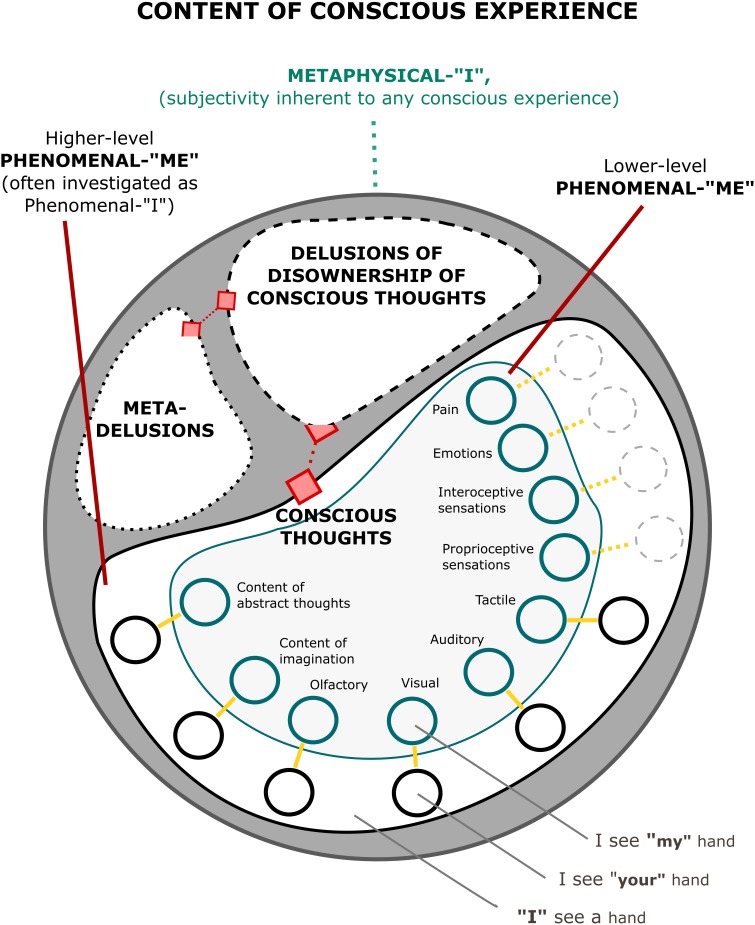FIGURE 2.
A simplified representation of a structure of phenomenal content including the metaphysical “I,” the phenomenal “Me,” and the phenomenal “I,” which can be understood (see in text) as a higher-level element of the phenomenal “Me.” Each pair of nodes connected with a yellow line represents one type of content of consciousness, with indigo nodes corresponding to self-related content, and black nodes corresponding to non-self-related content. In some cases (e.g., pain, emotions, interoceptive, and proprioceptive sensations), the black nodes are lighter and drawn with a dashed line (the same applies to links), to indicate that in normal circumstances one does not experiences these sensations as representing another person (although it is possible in thought experiments and pathologies). Multisensory/multimodal interactions have been omitted for the sake of clarity. All of the nodes compose the set of conscious thoughts, which can be formulated as “I experience X.” In normal circumstances, one does not deny ownership over these thoughts, however, in thought experiments, and in some cases of psychosis, one may experience that even such thoughts cease to feel as one’s own. This situation is represented by the shape with a dashed outline. Moreover, in special cases one can form meta-delusions, i.e., delusions about delusions – thoughts that my thoughts about other thoughts are not my thoughts (see text for description).

